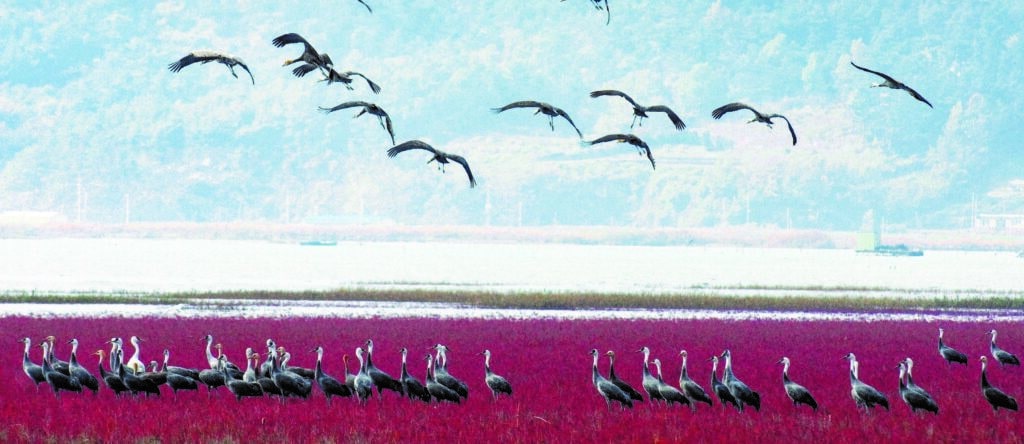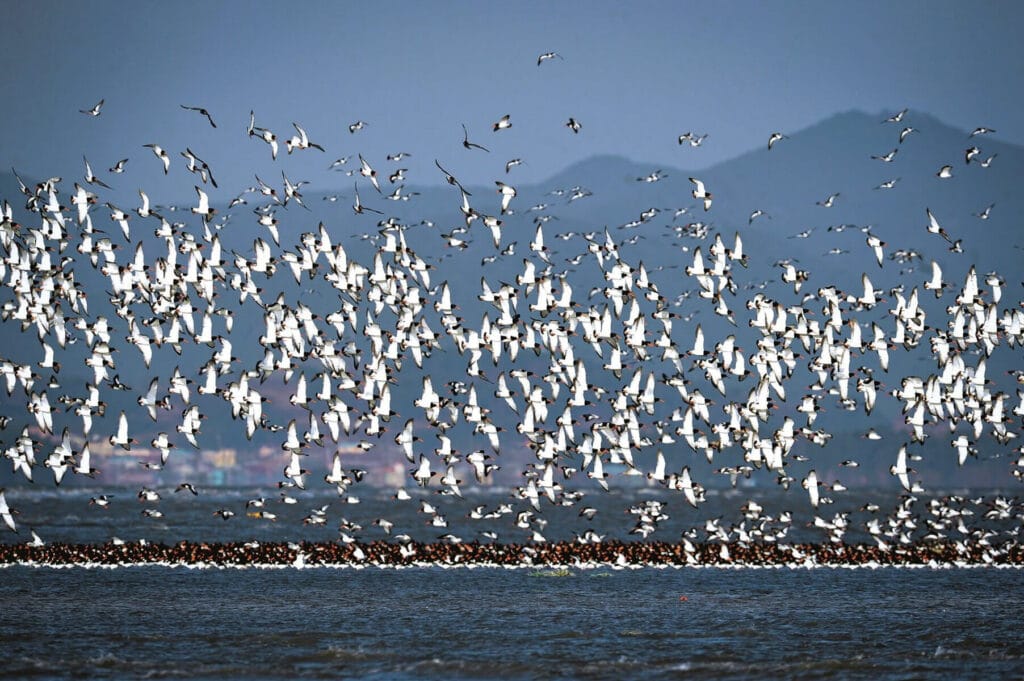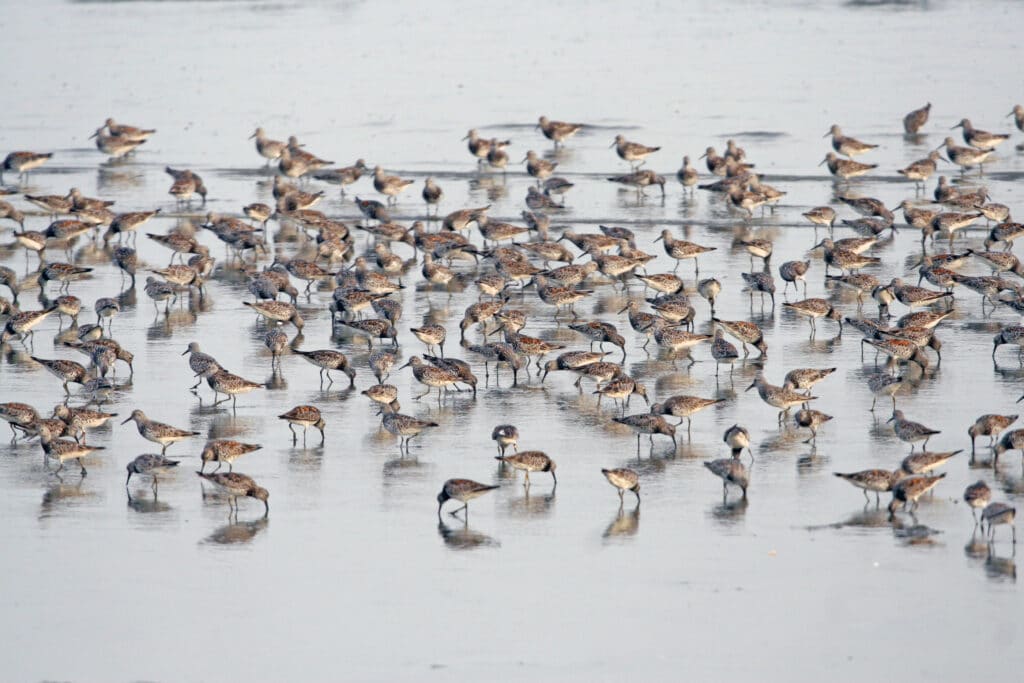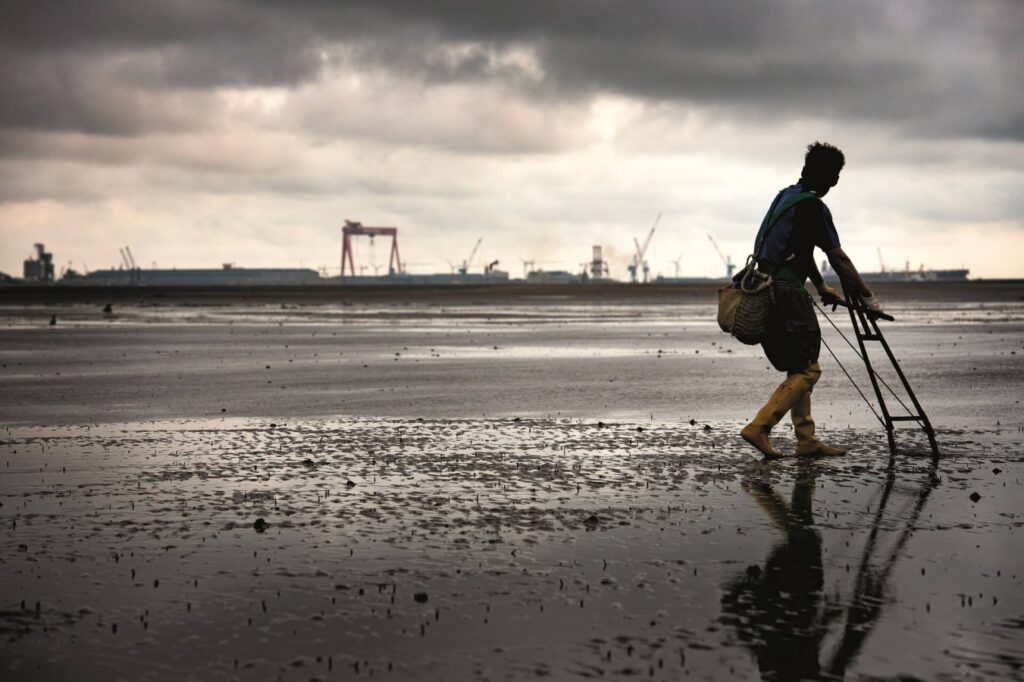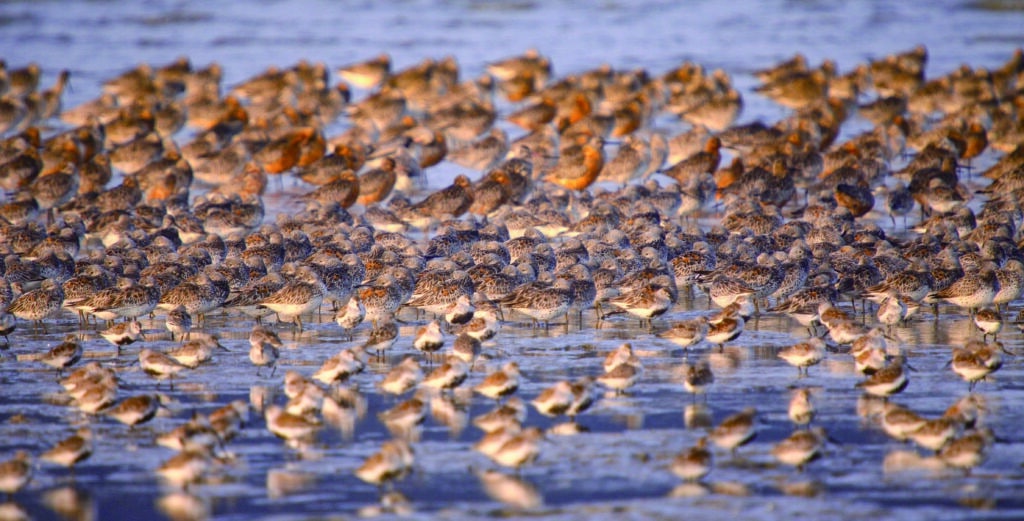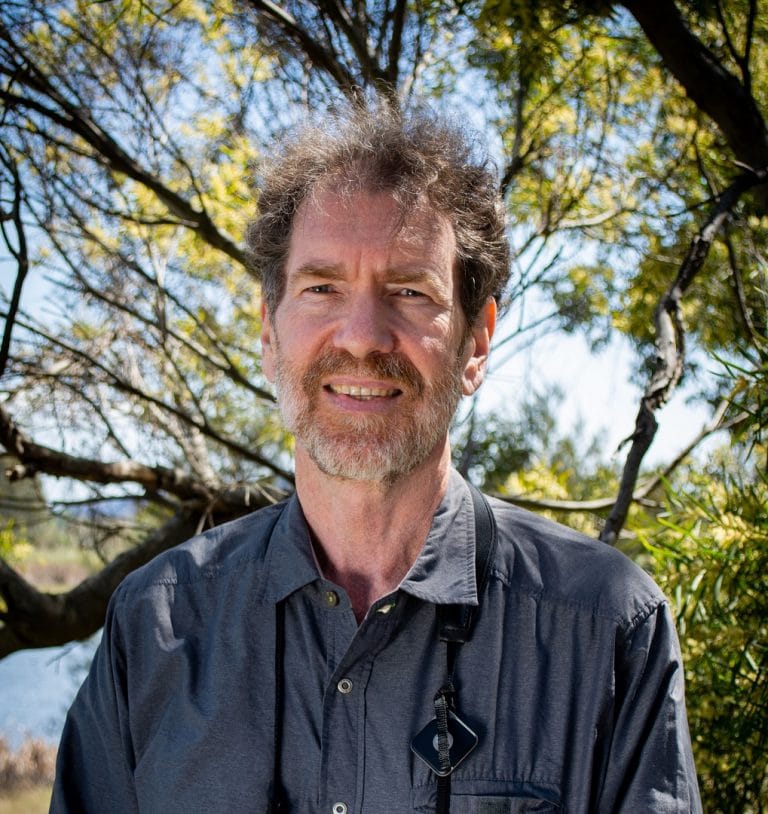Ding Li Yong, Flyways Coordinator, BirdLife Asia
Not far from the bustling city of Seocheon, at the mouth of the Geum estuary in South Korea, is the relatively flat island of Yubu. Except for a small, hilly, wooded area, Yubu is surrounded by vast expanses of tidal flats. Each year, several thousand Eurasian Oystercatchers of the distinctive eastern form osculans congregate in a staggering spectacle on Yubu’s shore – perhaps more than at any other wetland in eastern Asia.
Crossing to the mainland at Seocheon, the ebbing of the tide exposes intertidal flats that stretch as far as the eye can see into the Yellow Sea (or West Sea as it is known in Korea). These support a sizeable percentage of the populations of two threatened shorebirds, Far Eastern Curlew and Great Knot (both Endangered), as well as a small but steady stream in migration times of two even rarer waders, Spoon-billed Sandpiper (Critically Endangered) and Spotted Greenshank (Endangered).
The estuary of the Geum River in Seocheon county, including Yubu island, is one of four coastal wetlands inscribed in July this year by the United Nations Educational, Scientific and Cultural Organisation (UNESCO) as a World Heritage Property. These sites also include well-known Suncheon Bay on the south coast, which hosts almost a third of the world population of Hooded Crane (Vulnerable), and the mudflats of Gochang and the Shinan archipelago.
The prestige that comes with UNESCO status not only embodies outstanding importance of a site for biodiversity, but also provides some of the best guarantees for good management and protection. UNESCO inscription of these four wetlands therefore marks an extremely significant milestone in the conservation of the critically important intertidal wetlands of the Yellow Sea, and confirms what the conservation community has been advocating for – that these wetlands are important at the international level.
